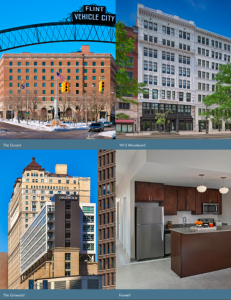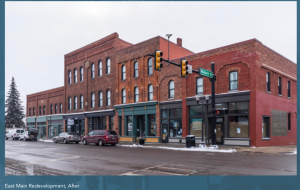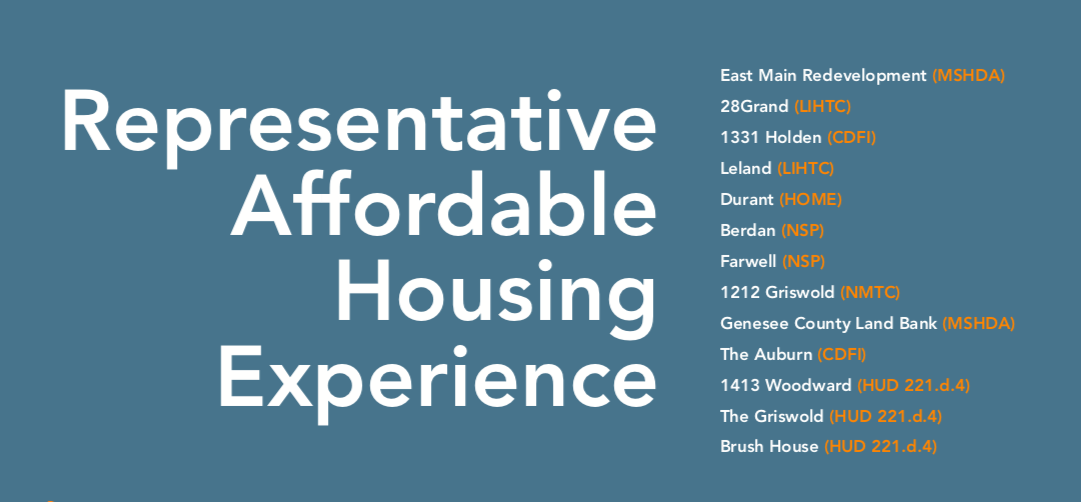The Importance of Affordable Housing
Affordable housing is as important now as it has ever been. With rising construction costs making new market rate multi- family residential projects ever more expensive to build and live in, finding quality housing at affordable rates has become more and more difficult in society.
Incentive programs in the form of grants, favorable loans, and tax credits are extremely valuable to developers to finance their projects, and since many of these incentive programs also require that the projects include affordable housing, either solely or as part of a mixed income unit mix, the value extends to residents as well in the form of quality inexpensive housing.

Because of this, many of the projects in Kraemer Design Group’s multi-family residential portfolio include an affordable housing component. KDG’s extensive experience in the multi-family residential market gives us the versatility to work on a multitude of projects ranging from adaptive reuse of historic buildings to the design of newly constructed high-rise residential units, and at finish levels appropriate for affordable housing as well as luxury living.
As the demand for affordable housing continues, KDG’s expertise allows us to offer cutting edge and appropriate solutions for every section of the housing market.
Affordable Housing Experience
Two exemplary affordable housing projects of KDG’s, each using a different incentive program, are the East Main Redevelopment project, a 16 unit mixed use building comprising four historic structures in downtown Milan, MI, and 28 West Grand, a 218 unit micro-loft project in downtown Detroit.
The Milan project utilized the Michigan State Housing and Development Authority (MSHDA) Rental Rehab Grant program to support the renovation of the four buildings, which comprise about a quarter of Milan’s downtown district, and won a Governor’s Award for historic preservation. 28 West Grand was the first ground up new residential high rise in Detroit since the 1980s. That project was awarded a 9% competitive Low Income Housing Tax Credit (LIHTC) incentive.

In addition to these two projects, several of KDG’s noteworthy multi-family residential projects have also received varying forms of affordable housing financial incentives, including Community Development Block Grants (CDBG) such as the Neighborhood Stabilization Program (NSP) and HOME Investment Partnerships Program. Others have used HUD based financing programs that do not require rent restricted units but do follow many of the typical federally funded/ affordable housing codes and regulations. Some have used Community Development Finance Institution (CDFI) lending programs with affordable housing requirements.
Lastly, since the City of Detroit enacted a change to its Ordinance requiring all development projects receiving more than $500,000 in tax incentives to have at least 20% of the units maintained as affordable, almost all of KDG’s projects now include an affordable housing component in some form. In all of these projects, the most important consideration for an architect is to understand the incentive programs and their requirements.
While these programs do not often result in significant design changes from typical market rate residential projects (the basic intent of these programs is simply to provide apartments that meet market expectations at an affordable rent) there are often various agency approval milestones along the way in addition to typical project deliverables.
In these cases, KDG is happy to take the lead alongside the developer to engage the governing agencies to ensure the projects fulfill all expectations, and when gray areas appear, to work with those agencies closely to find mutually agreeable solutions.
Affordable Housing Expertise in Detroit and Beyond
Those expectations include a variety of checks and balances that are simply there to ensure that affordable housing rightly provides a quality living environment for those of limited means.

These regulations vary from project to project, mostly depending on the type of incentive used, but often include design compliance with the Americans with Disabilities Act (ADA), Uniform Federal Accessibility Standards (UFAS), Federal Housing Act (FHA) compliance, MSHDA design standards, and bidding/contract administration requirements of the US Dept of Housing and Urban Development (HUD), all of which are squarely within KDG’s wheelhouse.
In addition, many affordable housing rehab projects require historic certification, and over one third of KDG’s design professionals are 36 CFR Part 61 certified historic architects and architectural historians. Lastly, KDG is adept at compliance with secondary programs that often layer upon affordable housing incentives such as Enterprise Green Communities, Energy Star, Section 106 review, and historic tax credits.
KDG’s experience is strong enough in these programs that we were recently recognized and appointed to a three-year term as one of MSHDA’s three design review architects covering affordable housing projects across the state.
